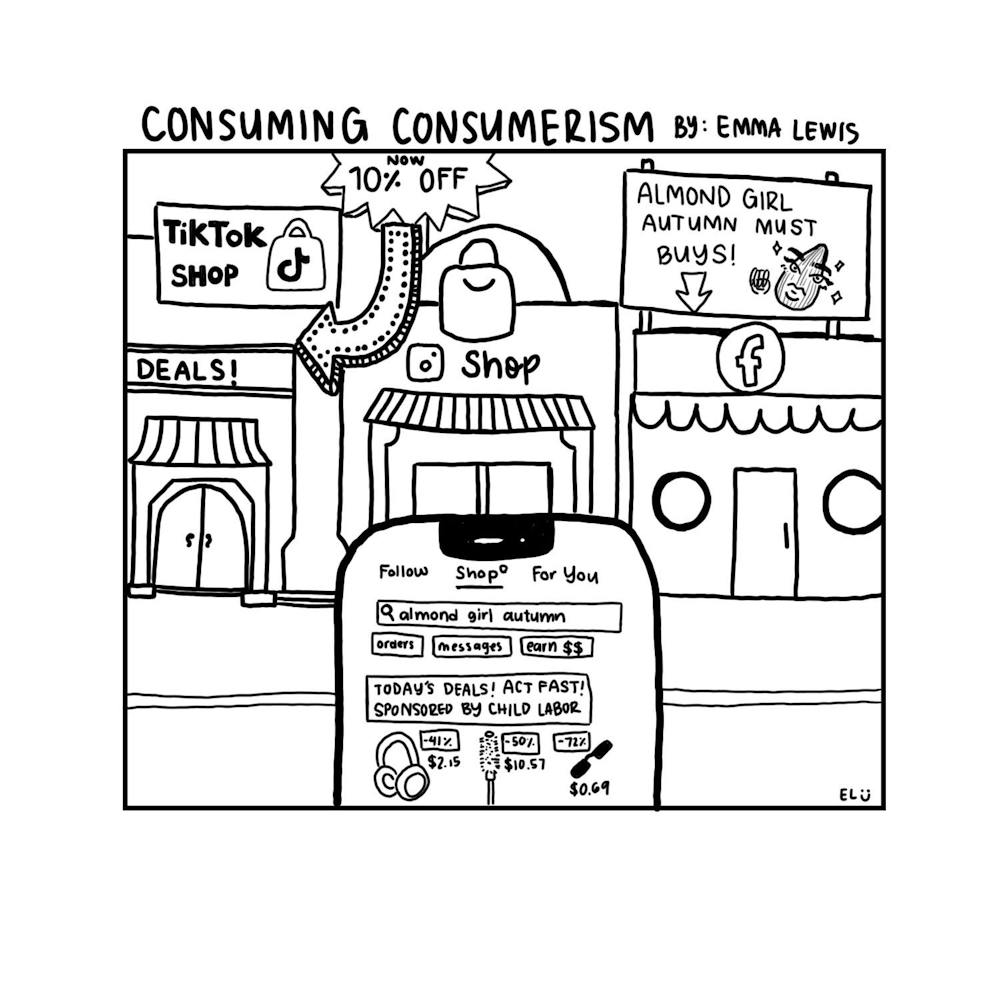Like it or not, social media is an increasing presence in our lives. More and more, it shapes the way we speak, dress, consume information and even buy things. At the top of the hierarchy of influence, particularly for young people, is TikTok, whose shop feature just turned a year old. Twelve months later, an app that used to be a space for escape, creativity and community has turned into a seemingly never-ending ad, and it’s hurting consumers.
The app has grown to be one of the largest social media platforms, amassing over one billion monthly users. Among those, nearly half are Gen Z and on average spend over an hour on the app per day. Some estimates found that nearly a third of videos on the app encounter are ads. With each scroll, users must depend on their own rationality to dodge product after product that is being marketed to them.
Thanks to social media marketplaces like the TikTok Shop, Instagram Shopping and Facebook Marketplace, it’s become easier than ever to get what you want as soon as you want it. With that convenience, though, comes a scarcity in genuine, unpaid endorsements of products. Fueling the engine of the market is an army of micro-influencers, wielding their platforms of a few thousand followers to tell you what product you should want next. Trends, especially microtrends, die so quickly it’s hard to keep up. In the minute you’ve bought one thing, it’s time to move onto the next.
In economics, we’re taught that consumers are rational, but not all are trained to spot the marketing tactics that loom on social media, leading some to make uninformed purchases.
Ads created by social media users challenge our perception of advertisements — it’s not a celebrity or a commercial actor standing under fluorescent lighting advertising something to you on television anymore; it’s someone that seems just like you, holding a product in their bedroom, using a false sense of familiarity to build trust.
When advertisers no longer seem out of touch with the average consumer, users are convinced. TikTok reports that users trust brands 41 percent more after viewing a creator’s ad. The system is working exactly as they designed it, where brands can leverage creators as shortcuts to consumers.
Creator ads also blur the lines of what a paid ad means. Rather than being directly paid by a brand to advertise a product, creators can set up affiliate accounts that earn commission from a linked shop on the TikTok Shop. While creators are responsible for disclosing partnerships and commission due to branded content policy, it’s easy for creators to slip through the cracks of enforcement, leaving viewers more vulnerable to mistaking paid promotions for non-sponsored enthusiasm. It’s also just as easy for a user to miss the small “earns commission” marker on a paid video altogether.
For many users, social media serves as a space where they can get away; the mindless scrolling through comedic and relatable content provides an opportunity for rest. With the increasing presence of commercialization on the app, users are getting fatigued by ads during that rest. Worse, they have to stay alert to the marketing constantly being pushed at them. It’s clear that social media sites prefer the extra profit, even at the expense of degrading user experience that drives them to the app in the first place.
It’s easy to fall into the trap of consumerism, especially with built-in accessibility to products and clout from devious influencers; but that 17-year-old with 40 thousand followers isn’t an expert in skin care. You shouldn’t take their word for the next miracle product. Protect your wallet and keep scrolling.



